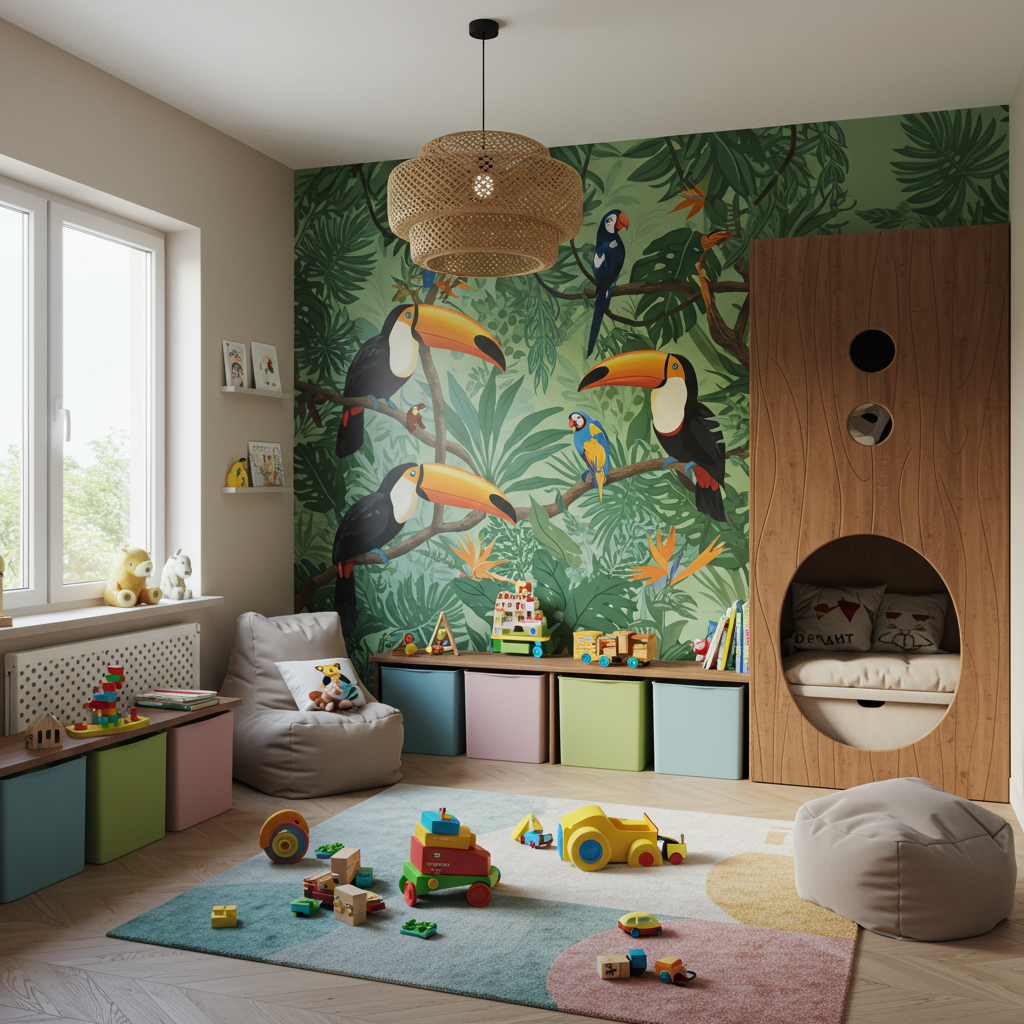
Creating a kids’ room that’s both fun and functional can feel like a daunting task. Children grow and change rapidly, and their spaces need to adapt with them. This article explores how to design a room that sparks joy and imagination while also providing practical solutions for storage, play, and study, ensuring the decor remains loved for years to come.
One of the key elements of a successful kids’ room design is flexibility. Instead of investing in character-themed furniture that might quickly become outdated, consider choosing classic pieces in neutral colors. These can be easily updated with accessories like bedding, rugs, and wall art that reflect your child’s current interests. Think about incorporating a modular shelving system that can be reconfigured as your child grows, offering adaptable storage for toys, books, and later, school supplies.
Storage is paramount in a child’s room. Clutter can easily overwhelm a space, hindering both play and relaxation. Utilize vertical space with wall-mounted shelves and drawers. Under-bed storage is another excellent option for hiding away toys and seasonal clothing. Incorporate playful storage solutions, like colorful bins and baskets, to encourage organization and make tidying up a more engaging activity.
Creating distinct zones within the room can enhance functionality. Designate a specific area for play, incorporating a comfortable rug and accessible toy storage. Establish a quiet corner for reading with a cozy chair and good lighting. As your child gets older, a dedicated study area with a desk and comfortable chair becomes essential. Clearly defined zones help children understand the purpose of each space and encourage focused activity.
Personalization is key to making a child feel truly at home in their room. Involve them in the decorating process by letting them choose colors, artwork, and accessories. Displaying their artwork and creations fosters a sense of pride and ownership. Consider incorporating a chalkboard wall or whiteboard to encourage creativity and self-expression. These personalized touches transform the room into a unique reflection of your child’s personality.
Lighting plays a crucial role in both functionality and mood. Ensure ample natural light during the day by keeping window coverings light and airy. Incorporate a mix of ambient, task, and accent lighting to create a warm and inviting atmosphere. A dimmable overhead light allows for flexibility, while a bedside lamp provides focused light for reading. Fairy lights or string lights can add a touch of whimsy and create a magical ambiance.
Finally, don’t forget the importance of safety. Secure furniture to the walls to prevent tipping hazards. Choose non-toxic paints and finishes. Ensure window coverings have cordless mechanisms to eliminate strangulation risks. By prioritizing safety, you can create a space where your child can play, learn, and grow with peace of mind.
Designing a fun and functional kids’ room is an investment in your child’s happiness and well-being. By focusing on flexibility, storage, zoning, personalization, lighting, and safety, you can create a space that they’ll love and cherish for years to come.



